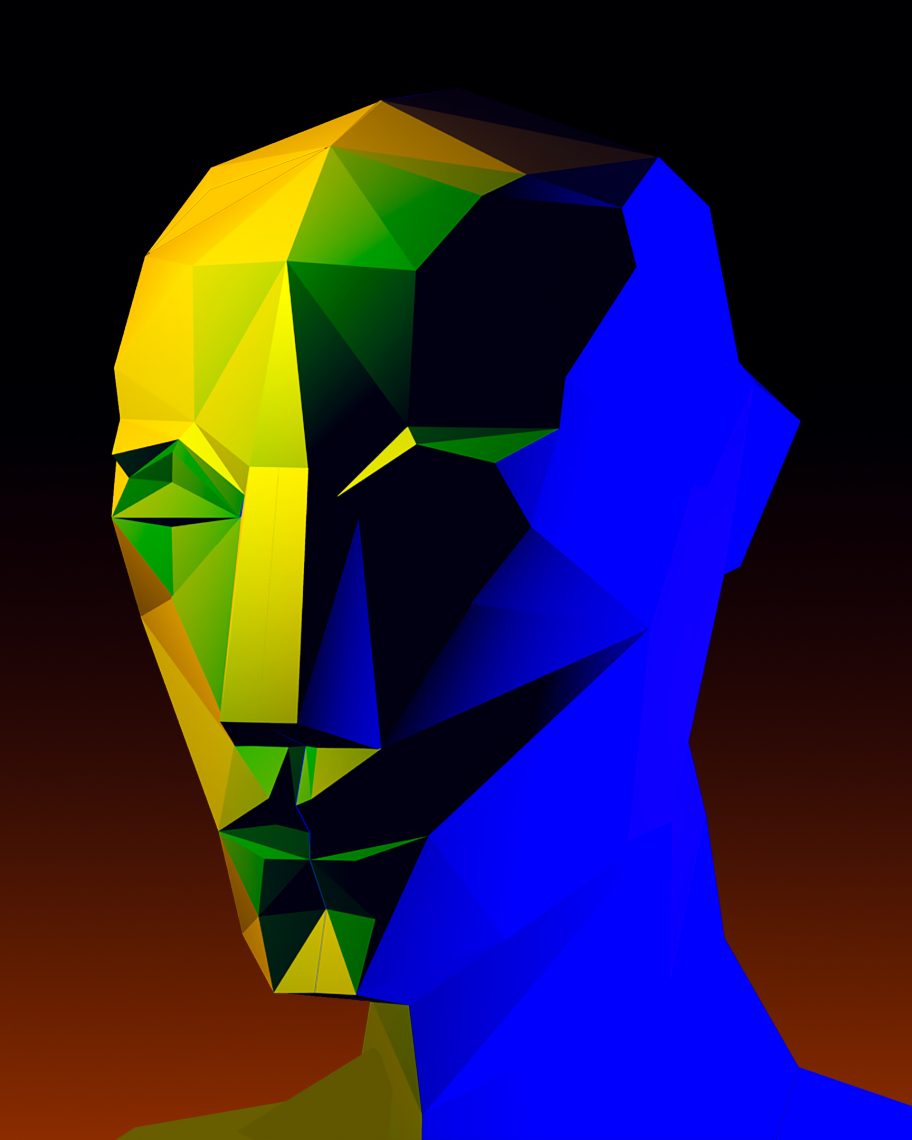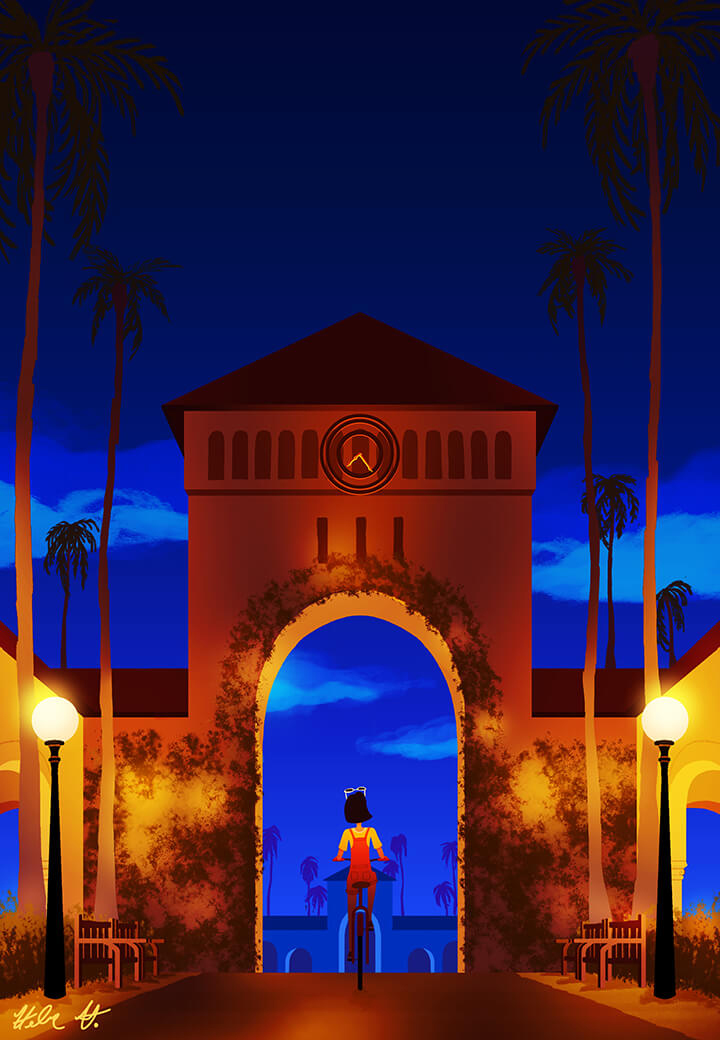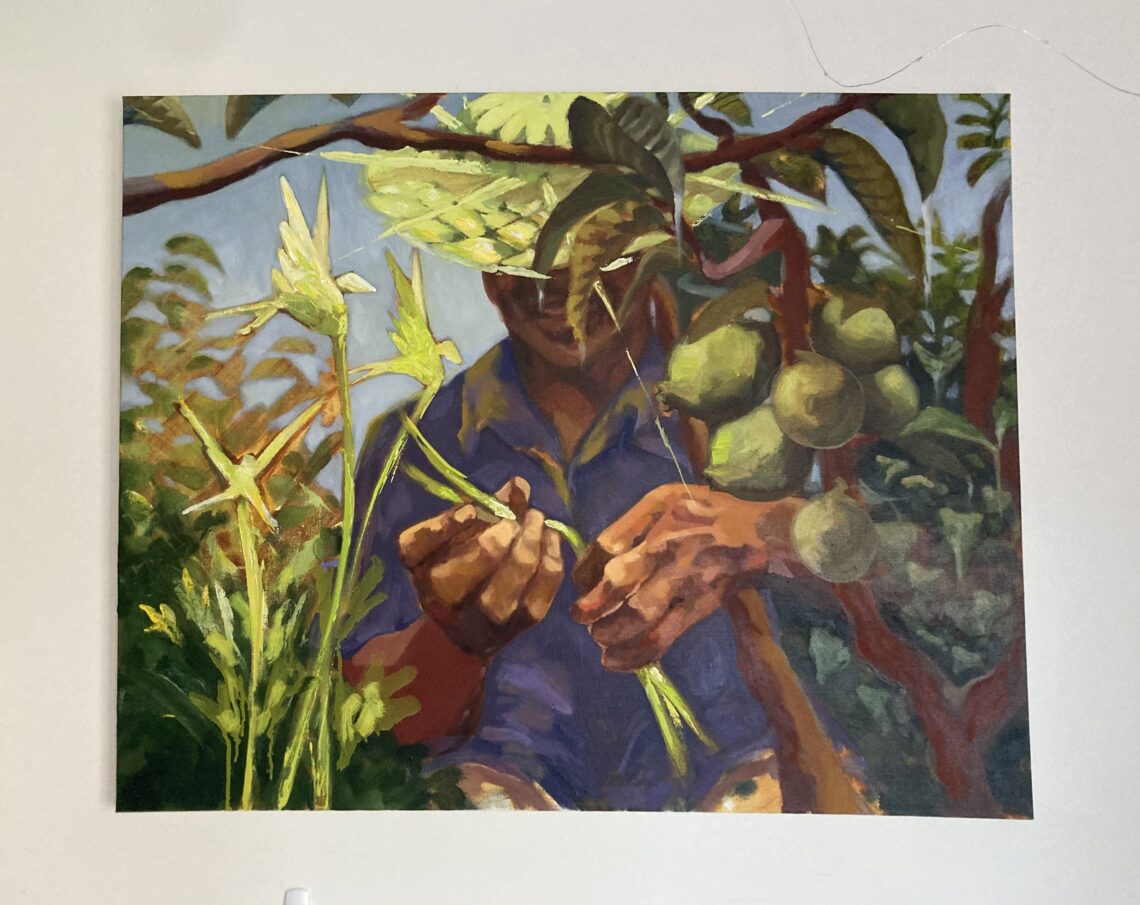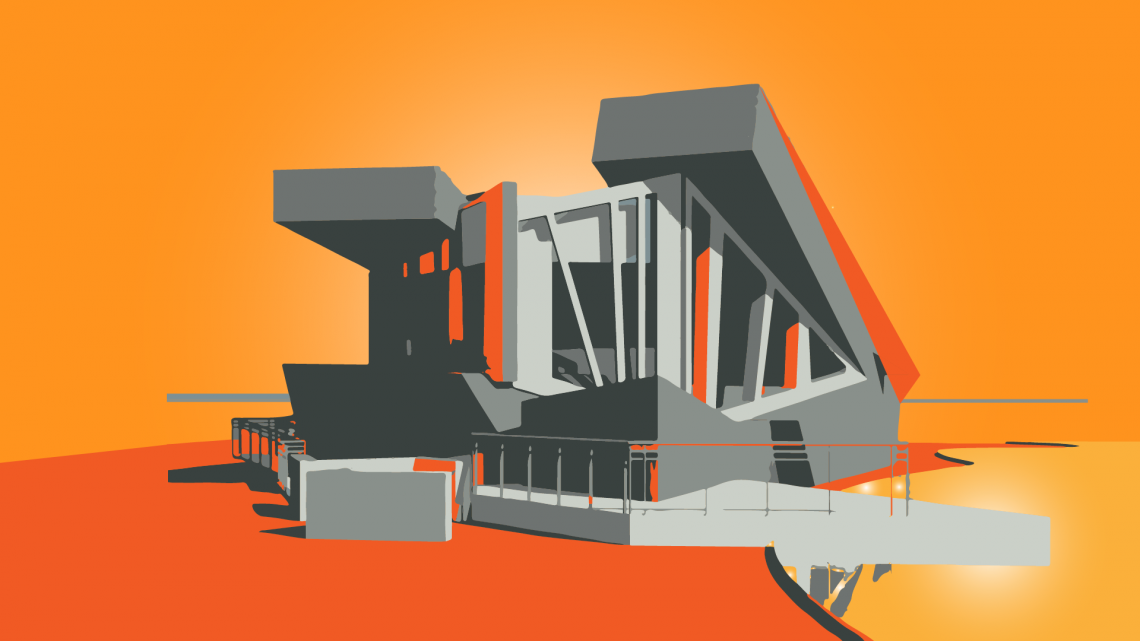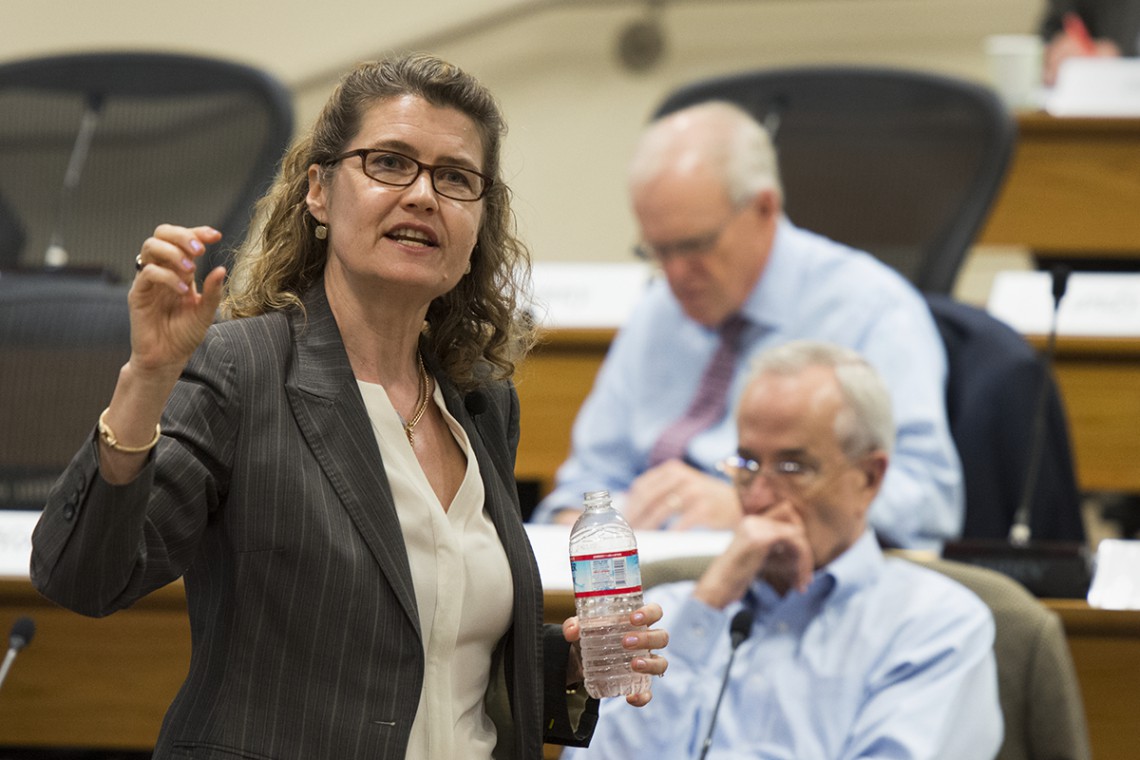
L.A. Cicero
English Professor Jennifer Summit speaking to the Faculty Senate on Thursday about two new undergraduate joint majors.Stanford to offer new undergraduate majors integrating humanities, computer science
Faculty Senate approves two "joint majors" on a pilot basis, bringing computer science together with English and music. More joint proposals are expected.
In a new experiment aimed at integrating the humanities and computer science while providing students with unique educational experiences, Stanford will offer undergraduates the opportunity to pursue a new “joint major” in computer science and either English or music starting in fall 2014. The Faculty Senate approved the new joint majors on Thursday.
English Professor Jennifer Summit speaking to the Faculty Senate on Thursday about two new undergraduate joint majors.
The new degrees are distinct from “dual degrees” or “double majors.” Rather than completing all of the requirements for two separate majors, students who choose a joint major will pursue a curriculum integrating coursework from both disciplines.
The Faculty Senate laid the groundwork Feb. 20 when it approved a six-year pilot structure for a new Joint Majors Program, allowing Stanford departments to team up to offer joint majors. In its action Thursday, the senate approved the first two such majors on a pilot basis – one in computer science and English, the other in computer science and music.
Additional joint major proposals are expected to come forward in the near future.
“The worlds of the humanities and computer science are coming closer together,” said Nicholas Jenkins, associate professor of English and director of the CS+X initiative in Stanford’s Office of the Vice Provost for Undergraduate Education. “Computational methods are an increasingly important part of humanities study, and the aesthetic, cognitive, ethical and communicative issues central to the humanities are important to the future of computing. Stanford should be at the forefront of integrating these disciplines.
“We’re also seeing students who want to balance their academic passions with pragmatic considerations about their career development, and this kind of program addresses that need. The intellectual landscape is changing, and the workplace landscape is changing. We’re looking to help cultivate, and provide academic structure for, a new generation of both humanists who can code and computer engineers whose creativity and adaptability is enhanced by immersion in the humanities. With Stanford’s amazingly talented undergraduates, we hope we can educate a new type of humanist and a new type of engineer.”
Jenkins credited Eric Roberts, professor of computer science at Stanford, with conceiving the original idea of bringing together the humanities and computer science in a joint major. Roberts was one of the concept’s most energetic advocates throughout the process that culminated in the Senate’s vote, Jenkins said.
The core of the joint major concept is integrated learning, one of the key recommendations of the 2012 Study of Undergraduate Education at Stanford (SUES).
“These give our students the opportunity to cross the techie-fuzzy divide,” said Jennifer Summit, professor of English and chair of the Academic Council’s Committee for the Review of Undergraduate Majors, who presented the proposals to the senate on Thursday. “They represent ‘interdisciplinary’ in a new mode, in a way that will prepare students for the transdisciplinary challenges they will face in the world ahead.”
Students pursuing one of the two new joint majors will need to complete a reduced number of total units in each discipline. But they also will need to complete a senior “capstone” project or cross-disciplinary honors thesis that integrates aspects of both fields and demonstrates understanding of the synthesis between them.
Academic advisers from both departments will help students design a course pattern that fosters integrated learning and emphasizes points of connection between the two disciplines. The joint degree upon graduation will be a BAS – a Bachelor of Arts and Science degree.
“Computing now plays a significant role in a wide variety of other fields and has become integral to many of those fields,” said Jennifer Widom, professor and chair of the Computer Science Department. “These joint majors will allow students to gain mastery of two distinct fields of study while also exploring the increasing connections between them. The confluence of our extremely strong engineering school and equally strong liberal arts disciplines makes Stanford an exciting setting for this program.”
Computing technologies are increasingly used at Stanford and elsewhere to make music, to compose music, to analyze literature and to create entire new approaches to humanistic research. In the digital humanities, students and faculty are engaged in computer-based study of texts, 3-D mapping, digitization, advanced visualization and other research techniques.
“Integrative work is already happening at Stanford,” said Gavin Jones, professor and chair of the English Department. “Last year’s award for the best undergraduate honors thesis was won by an English major for his computational analysis of ‘loudness’ in the novel. Many of our undergraduates are inherently interdisciplinary thinkers. The joint major provides a new kind of formal structure to further encourage this work.”
The curriculum in the Department of Music also incorporates substantial coursework and research involving software design, human-computer interaction, algorithmic composition, data visualization and sonification, and more. The department routinely attracts computer science majors whose passion for music finds an outlet in campus performance ensembles and individual course offerings, but whose computer science studies may not leave time for a deeper study of music.
“Given what I do today, if such a program had existed for me as an undergraduate, I would have taken it in a heartbeat,” said Ge Wang, assistant professor of music at Stanford’s Center for Computer Research in Music and Acoustics (CCRMA). “Music and technology have always progressed hand-in-hand. Today, computation enables and inspires new ways to create and interact through music, while the arts and humanities inform how we might use new technology to enrich our human experience. The joint major program captures the soul of this duality.”
More information about the first two joint majors will be available to students this spring. Joint major proposals from other humanities departments will be coming forward for approval in the coming weeks and months following review by the respective deans, the Committee for the Review of Undergraduate Majors and the Faculty Senate.






